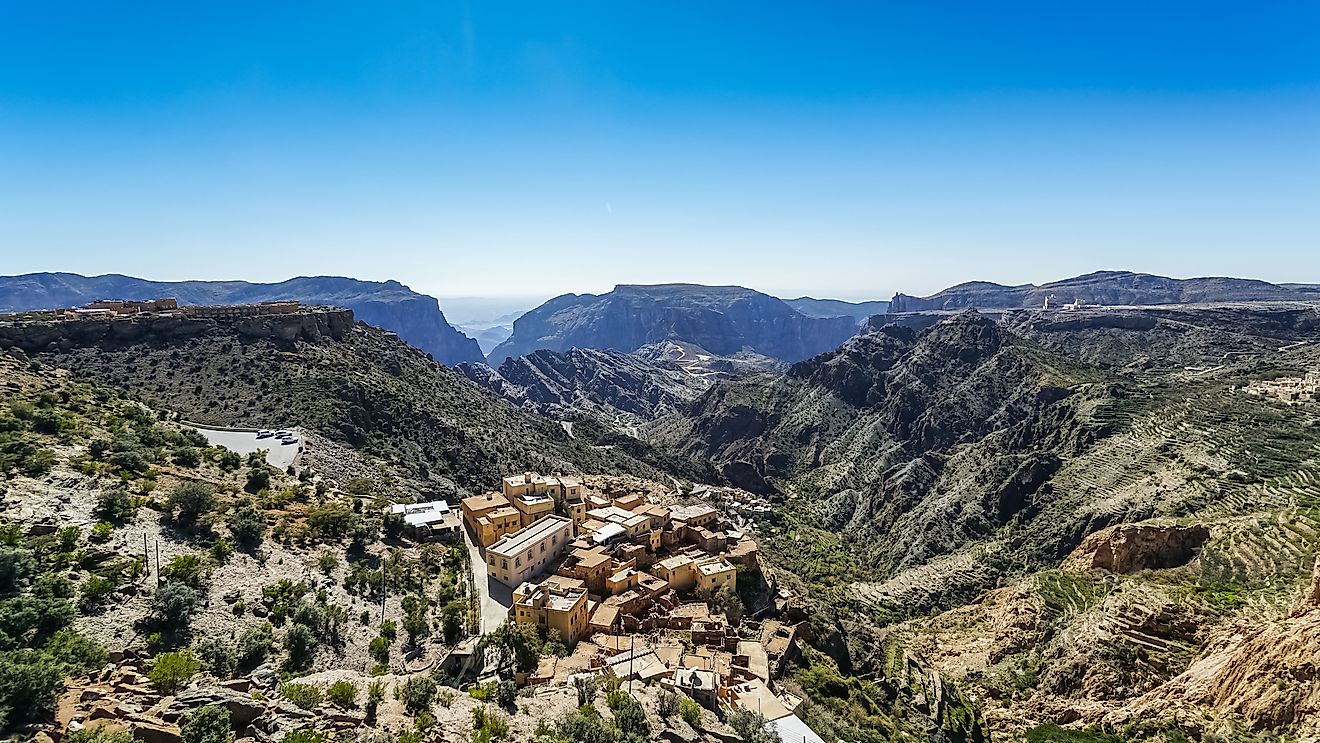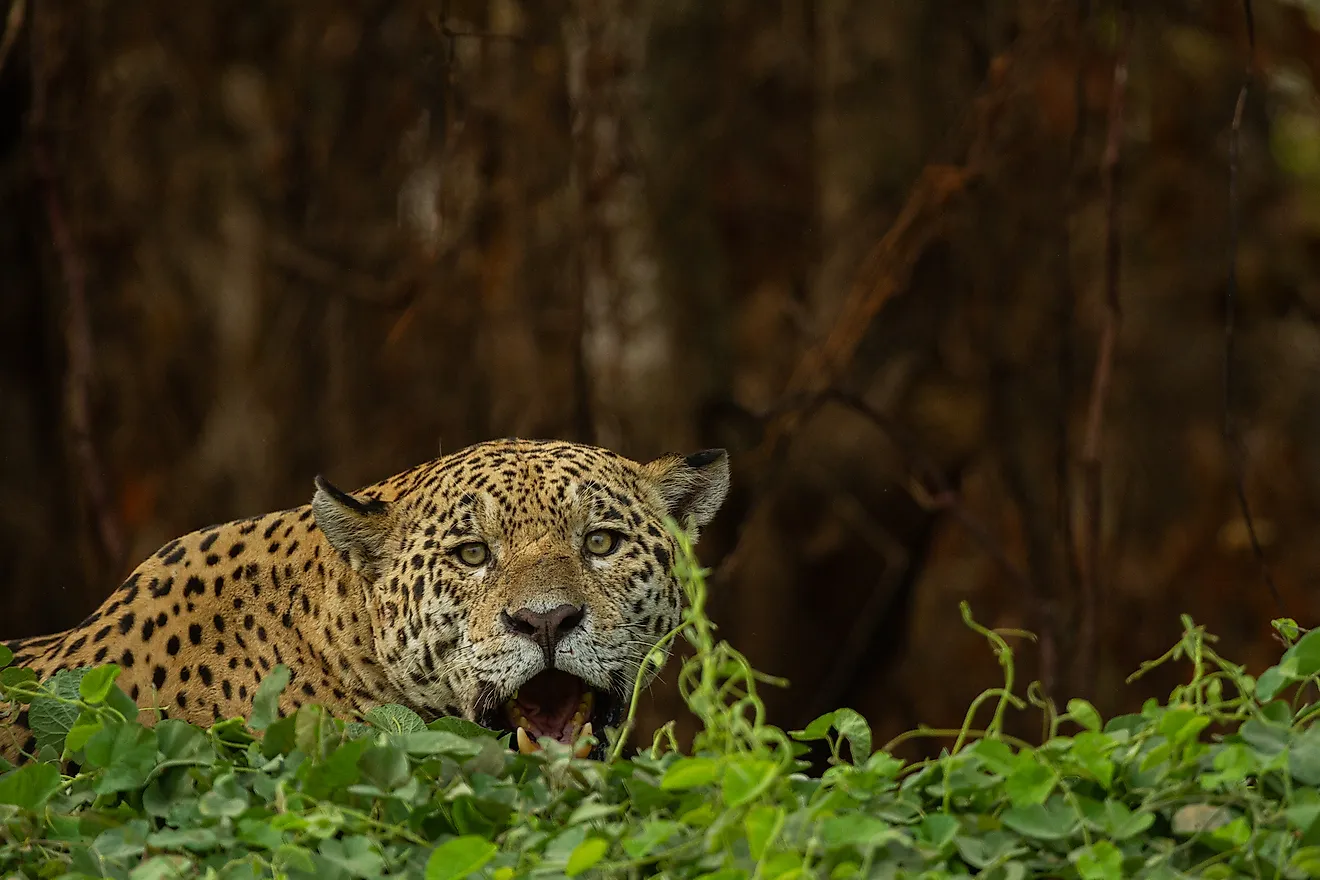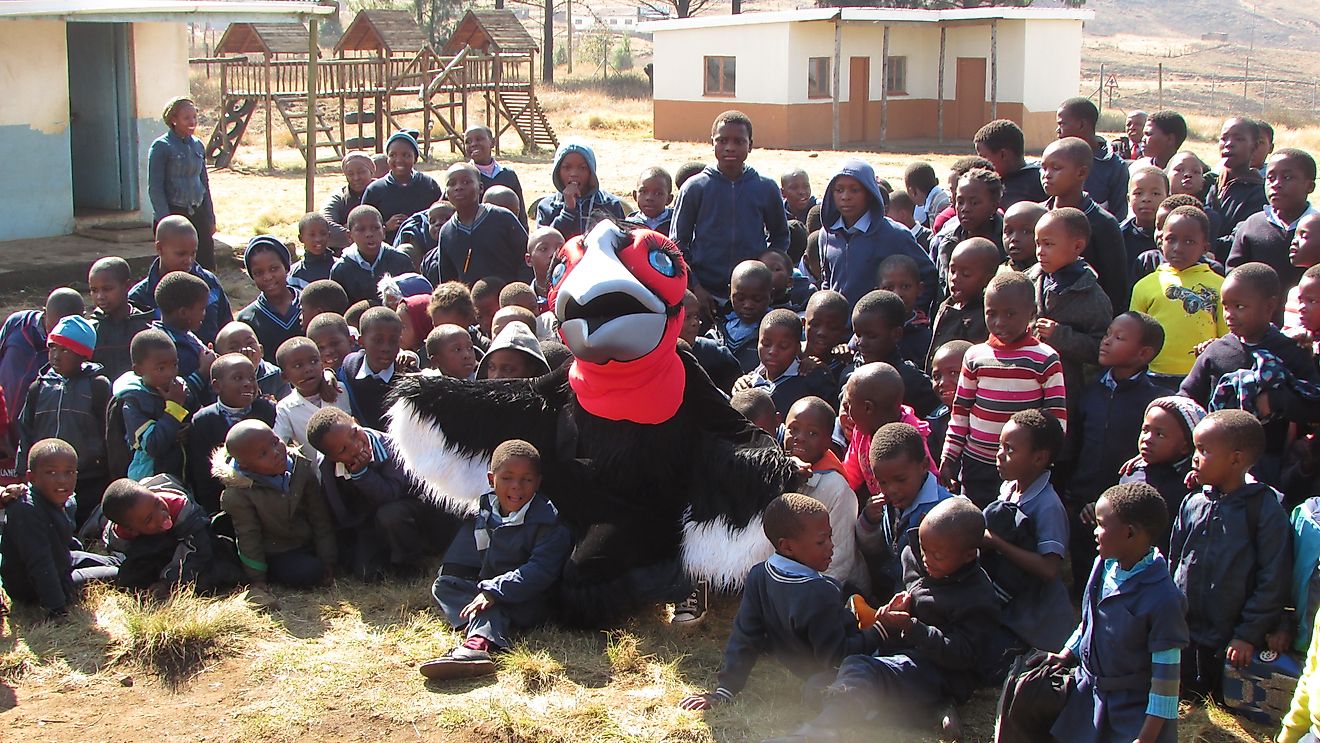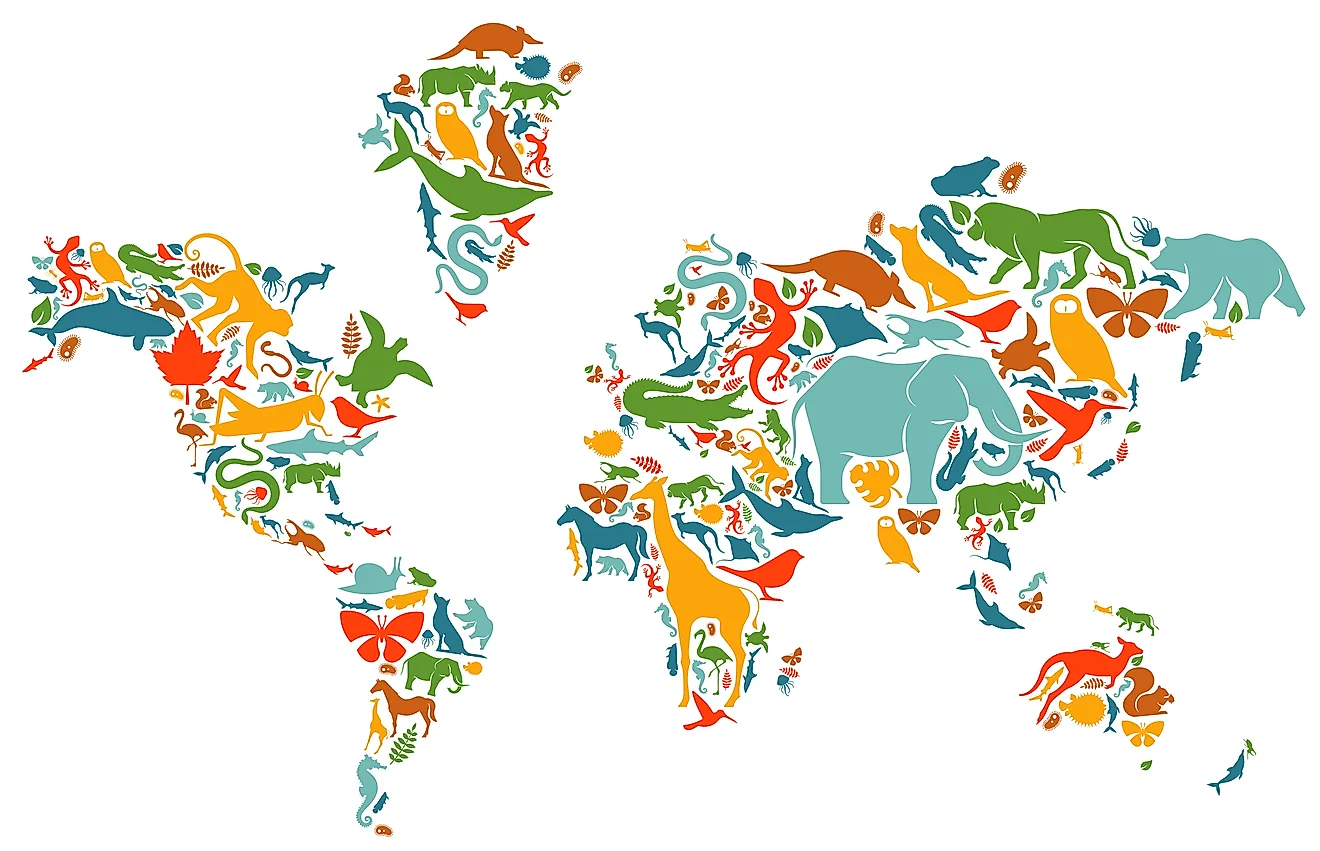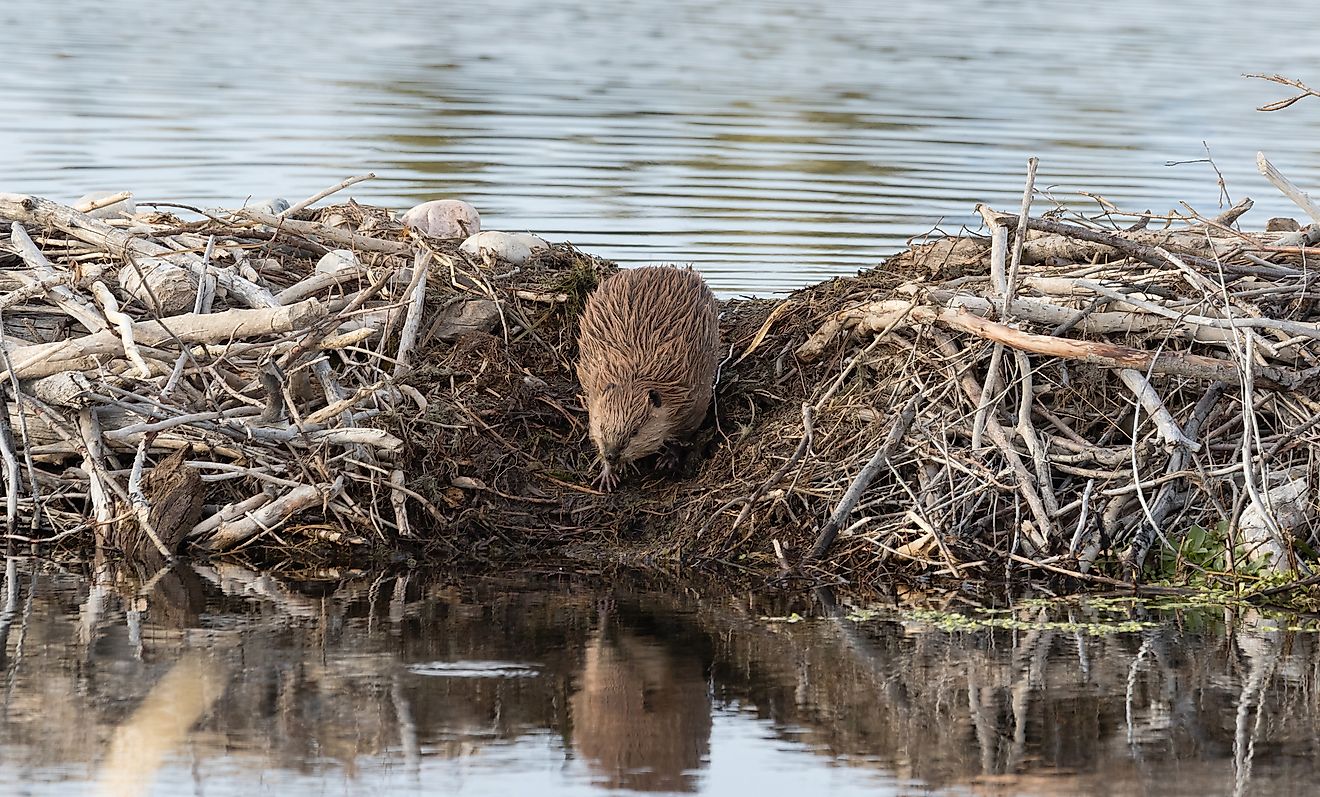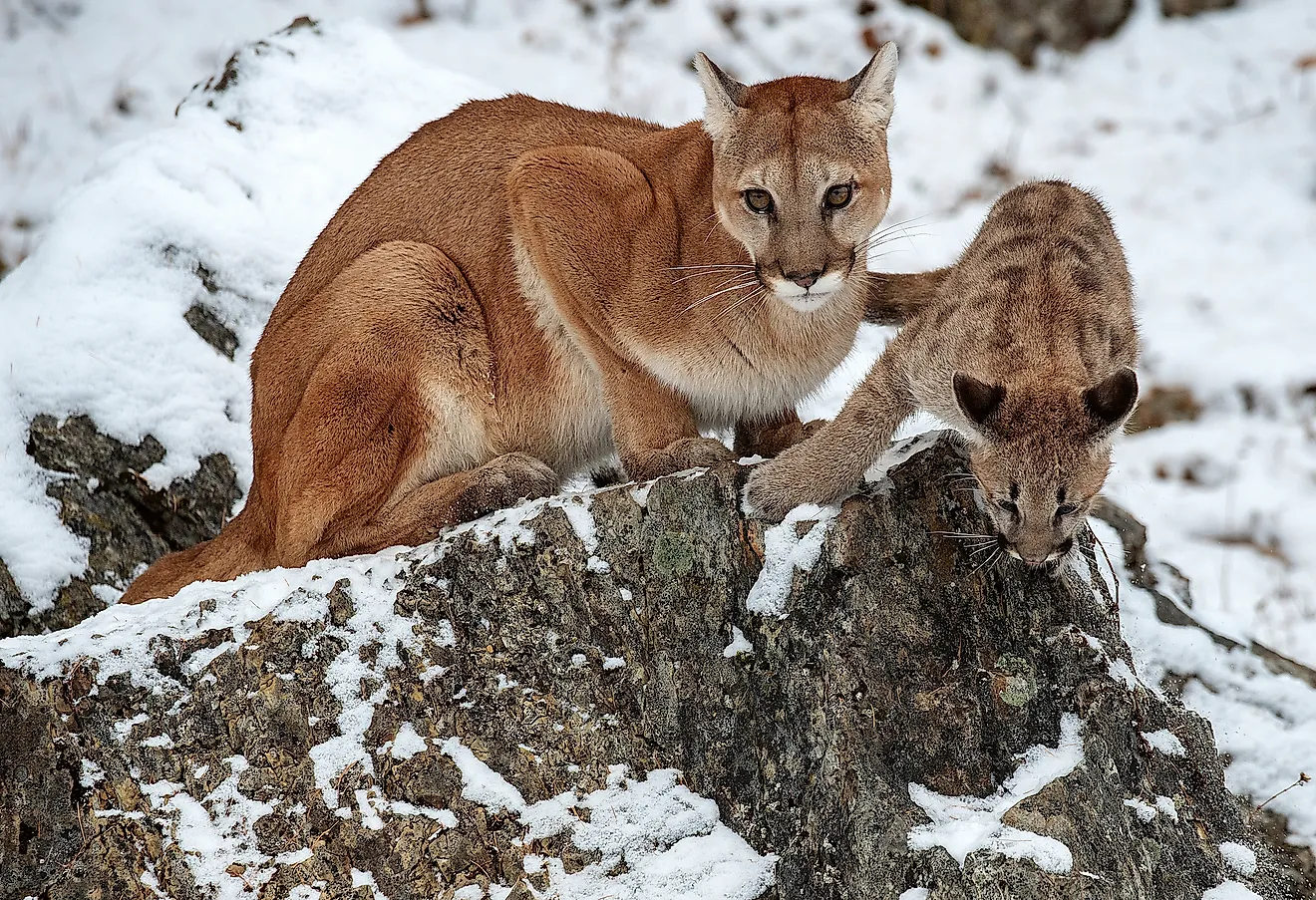What Animals Live In Sri Lanka?
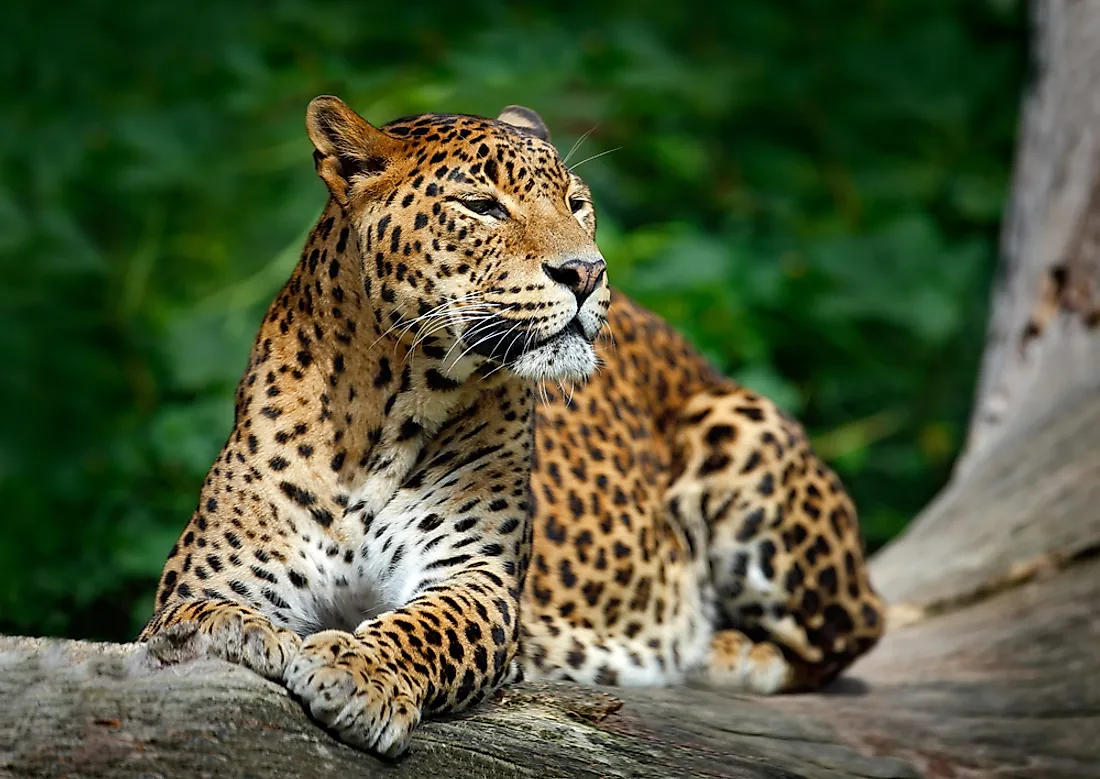
Sri Lanka is an island country in the Indian Ocean. Despite its small size, Sri Lanka is host to a great diversity of flora and fauna. About 123 mammalian species live in the country including many threatened ones. One species is critically endangered, ten each are endangered and vulnerable, and three species are near threatened. Sri Lanka also has high levels of endemism. 23% of all flowering plants and 16% of the fauna found in this country occur nowhere else in the world. Some of the most iconic mammalian fauna of Sri Lanka have been mentioned below.
Sri Lankan Elephant
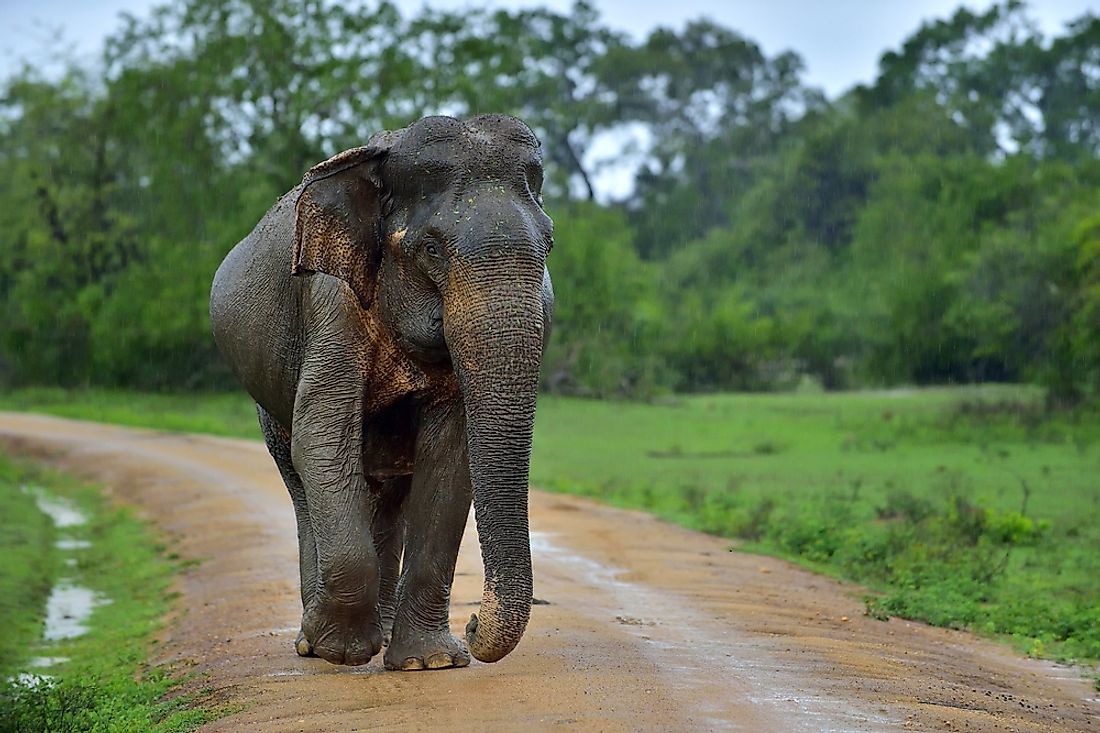
Elephas maximus maximus is one of three subspecies of the Asian elephant. It is native to Sri Lanka. These elephants are the largest subspecies of the Asian elephant. They reach a shoulder height of between 2 and 3.5 m. They also have a darker skin color. These elephants have a restricted habitat confined to the dry zone in Sri Lanka’s north, east, and southeast. Human-animal conflicts and habitat destruction threaten the survival of the Sri Lankan elephant. 50% of the population of these animals have been lost over the last three generations. Thus, IUCN has listed the species as endangered.
Toque Macaque
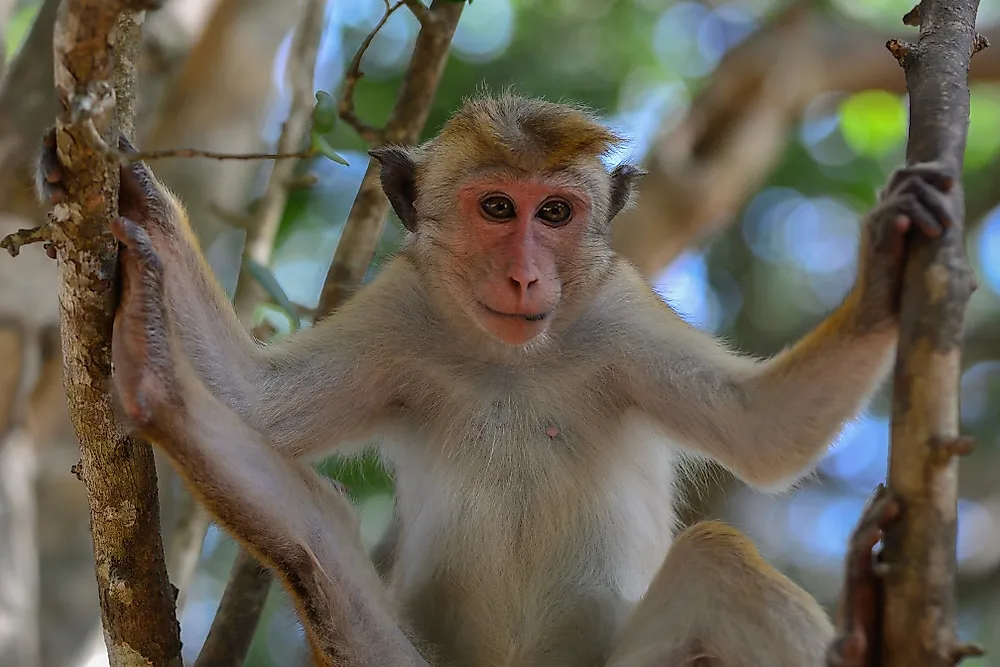
The Macaca sinica is a primate endemic to Sri Lanka. It is a reddish-brown-colored Old World monkey with a highly structured society. They live in groups of 8 to 40 members. These monkeys have a broad diet consisting of flowers, fruits, grains, etc. They also easily adapt to living near humans and have very little fear of them. Wild cats and Indian rock python are the primary predators of these monkeys. Since the torque macaque has a highly restricted habitat limited to the island of Sri Lanka and is threatened by habitat destruction, hunting, and capture for the pet trade, IUCN has listed the species as endangered. Due to the habit of these monkeys to invade croplands, farmers often resort to killing them to protect their crops. Thus, human-monkey conflict needs to be addressed to protect the species.
Sri Lankan Brown Palm Civet
The Paradoxurus montanus is a species of viverrid endemic to Sri Lanka. It has a dark wood-brown coat that is slightly grayish-toned. The underside is paler. The eyes are large and have vertical pupils. The ears are round and prominent. What distinguishes this species from other civets is the pleasant smell released by its anal glands. Most other civets are known to produce unpleasant odors. The brown palm civets odor has been compared to the fragrance of Michelia champaca.
Sri Lankan Leopard
Panthera pardus kotiya is a leopard subspecies found only in Sri Lanka. This leopard has a tawny to rusty yellow-colored coat with rosettes that are smaller than that of the Indian leopards. Since the Sri Lankan leopard faces no competition in its habitat and is the apex predator therein, it grows quite large. Males of this subspecies often weight as much as 100 kg. These felids occupy a wide variety of habitats ranging from grasslands and forest patches to tea estates and plantations. They are solitary hunters and usually nocturnal. They prey on small mammals, reptiles, and birds. The Sri Lankan leopard is threatened with habitat loss and fragmentation, poaching, and persecution. IUCN has enlisted the species as endangered.
Purple-faced Langur
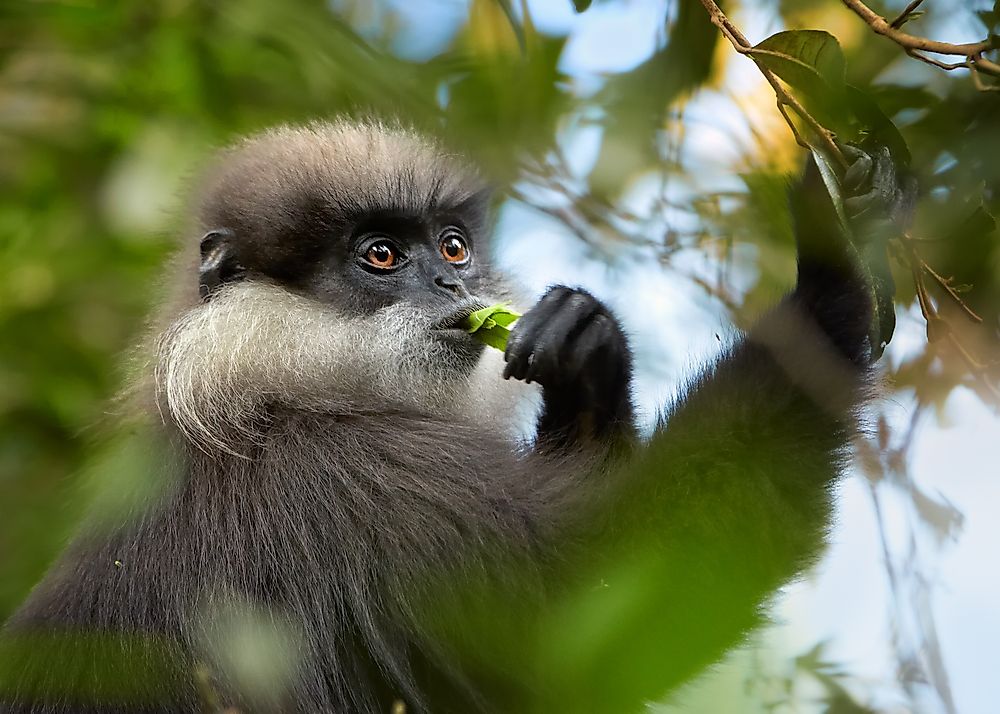
The Semnopithecus vetulus is an Old World monkey found only in Sri Lanka. It is an arboreal species with a brown coat, dark face, and long tail. It occurs in the canopy forests in Sri Lankan mountains and also in the wet zone in the southwestern part of the country. The purple-faced langurs have a largely folivorous diet consisting of fruits, seeds, and flowers. Sadly, these animals are subjected to numerous challenges in their habitat. Their range is continuously decreasing due to deforestation and urbanization. Much of the natural forests where they thrived have now been destroyed. The langurs have no been forced to live closer to humans and are often subjected to persecution due to human-animal conflict.
Sri Lankan Sloth Bear
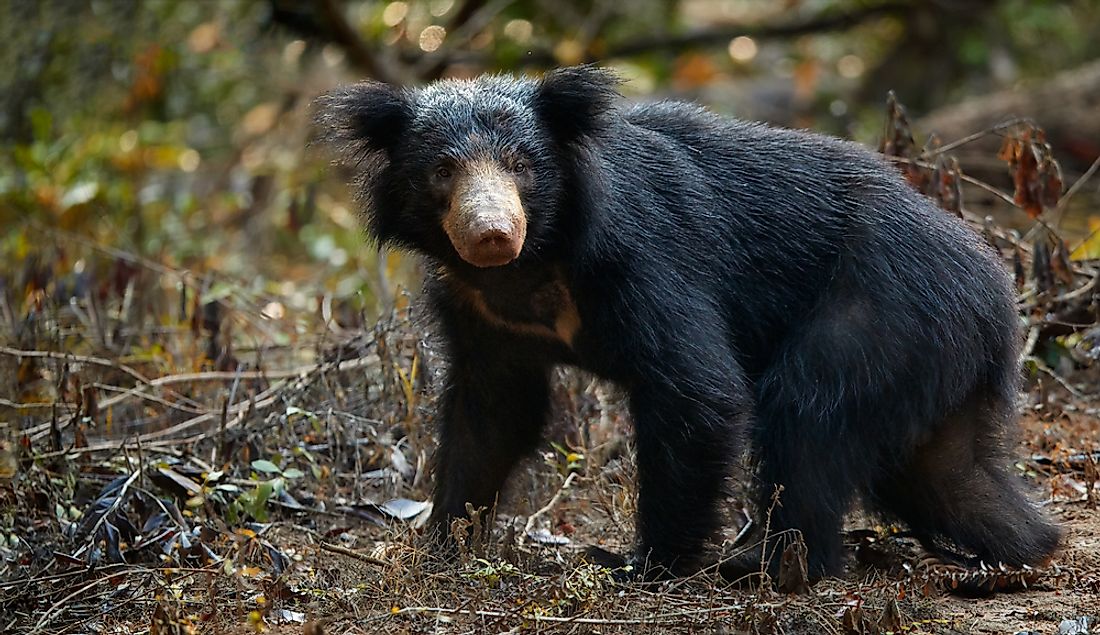
Melursus ursinus inornatus is a sloth bear subspecies found in Sri Lanka. It lives in the lowland dry forests of the country. It is an omnivorous mammal that feeds on roots, berries, nuts, meat, and carrion. It also consumes insects. Unfortunately, the Sri Lankan sloth bear is on the verge of extinction. Only about 500 individuals of this species remain in the wild in small, isolated populations. It is highly dependent on natural forests for food and the destruction of the same has led to its dramatic population decline.
Red Slender Loris
The Loris tardigradus is a small, nocturnal primate found in the Sri Lankan rainforests. It is endemic to the country. It has forward-facing eyes and long slender limbs. The tail is absent in the species. It has a well-developed index finger and larger prominent ears. The fur is reddish-brown color on the dorsal surface white the underside is whitish-grey. These animals sleep during the daytime and are active at night. They hunt for insects, small reptiles, and bird eggs but also feed on plant parts. The red slender loris is an endangered species suffering from habitat destruction, and trapping and killing by humans. Road accidents, electrocution on live wires and capture for the pet trade also claims many individuals from the wild. Thus, is has been labeled as an endangered species by the IUCN.
Grizzled Giant Squirrel
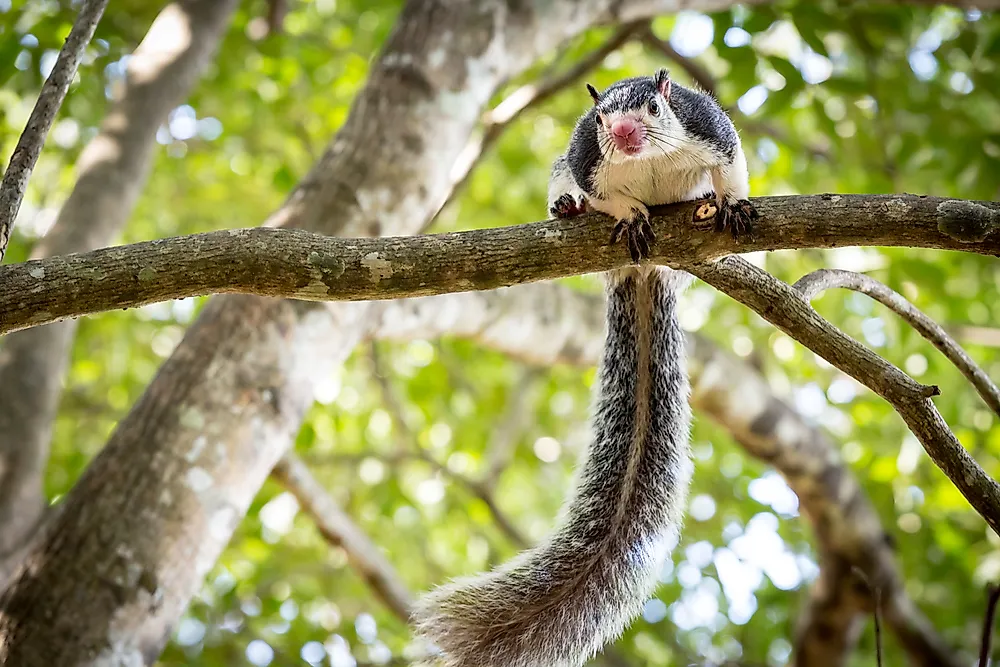
The Ratufa macroura is a tree squirrel found in the Sri Lankan highlands and some parts of southern India. It is the smallest of the giant squirrels found in the Indian subcontinent. It can range in size from 50 to 90 cm from head to the tip of the tail. These squirrels feed on fruits, nuts, bird eggs, and insects. It has been enlisted as a Near Threatened species due to hunting and habitat loss.
What Animals Live In Sri Lanka?
| Rank | Name | Binomial | Status |
|---|---|---|---|
| 1 | Asian elephant | Elephas maximus | Endangered |
| 2 | Dugong | Dugong dugong | Vulnerable |
| 3 | Gray slender loris | Loris lydekkerianus | Least concern |
| 4 | Red slender loris | Loris tardigradus | Endangered |
| 5 | Toque macaque | Macaca sinica | Endangered |
| 6 | Tufted gray langur | Semnopithecus priam | Near threatened |
| 7 | Purple-faced langur | Trachypithecus vetulus | Endangered |
| 8 | Indian porcupine | Hystrix indica | Least concern |
| 9 | Grizzled giant squirrel | Ratufa macroura | Near threatened |
| 10 | Indian giant flying squirrel | Petaurista philippensis | Least concern |
| 11 | Travancore flying squirrel | Petinomys fuscocapillus | Near threatened |
| 12 | Indian palm squirrel | Funambulus palmarum | Least concern |
| 13 | Layard's palm squirrel | Funambulus layardi | Vulnerable |
| 14 | Dusky palm squirrel | Funambulus obscurus | Vulnerable |
| 15 | Indian gerbil | Tatera indica | Least concern |
| 16 | Lesser bandicoot rat | Bandicota bengalensis | Least concern |
| 17 | Greater bandicoot rat | Bandicota indica | Least concern |
| 18 | Blanford's rat | Madromys blanfordi | Least concern |
| 19 | Indian bush rat | Golunda ellioti | Least concern |
| 20 | Soft-furred rat | Millardia meltada | Least concern |
| 21 | Little Indian field mouse | Mus booduga | Least concern |
| 22 | Ceylon spiny mouse | Mus fernandoni | Endangered |
| 23 | Mayor's mouse | Mus mayori | Vulnerable |
| 24 | House mouse | Mus musculus | Least concern |
| 25 | Nillu rat | Rattus montanus | Endangered |
| 26 | Brown rat | Rattus norvegicus | Least concern |
| 27 | Ohiya rat | Srilankamys ohiensis | Vulnerable |
| 28 | Asiatic long-tailed climbing mouse | Vandeleuria oleracea | Least concern |
| 29 | Indian hare | Lepus nigricollis | Least concern |
| 30 | Horsefield's shrew | Crocidura horsfieldii | Data deficient |
| 31 | Sri Lankan long-tailed shrew | Crocidura miya | Endangered |
| 32 | Sinharaja shrew | Crocidura hikmiya | Endangered |
| 33 | Kelaart's long-clawed shrew | Feroculus feroculus | Endangered |
| 34 | Pearson's long-clawed shrew | Solisorex pearsoni | Endangered |
| 35 | Etruscan shrew | Suncus etruscus | Least concern |
| 36 | Sri Lanka shrew | Suncus fellowesgordoni | Endangered |
| 37 | Sri Lanka highland shrew | Suncus montanus | Vulnerable |
| 38 | Asian house shrew | Suncus murinus | Least concern |
| 39 | Jungle shrew | Suncus zeylanicus | Endangered |
| 40 | Lesser short-nosed fruit bat | Cynopterus brachyotis | Least concern |
| 41 | Greater short-nosed fruit bat | Cynopterus sphinx | Least concern |
| 42 | Indian flying fox | Pteropus giganteus | Least concern |
| 43 | Leschenault's rousette | Rousettus leschenaulti | Least concern |
| 44 | Hardwicke's woolly bat | Kerivoula hardwickii | Least concern |
| 45 | Painted bat | Kerivoula picta | Least concern |
| 46 | Lesser large-footed bat | Myotis hasseltii | Least concern |
| 47 | Chocolate pipistrelle | Falsistrellus affinis | Least concern |
| 48 | Tickell's bat | Hesperoptenus tickelli | Least concern |
| 49 | Kelaart's pipistrelle | Pipistrellus ceylonicus | Least concern |
| 50 | Indian pipistrelle | Pipistrellus coromandra | Least concern |
| 51 | Greater Asiatic yellow bat | Scotophilus heathi | Least concern |
| 52 | Lesser Asiatic yellow bat | Scotophilus kuhlii | Least concern |
| 53 | Round-eared tube-nosed bat | Murina cyclotis | Least concern |
| 54 | Eastern bent-wing bat | Miniopterus fuliginosus | Least concern |
| 55 | Wrinkle-lipped free-tailed bat | Chaerephon plicata | Least concern |
| 56 | Egyptian free-tailed bat | Tadarida aegyptiaca | Least concern |
| 57 | Naked-rumped pouched bat | Saccolaimus saccolaimus | Least concern |
| 58 | Long-winged tomb bat | Taphozous longimanus | Least concern |
| 59 | Black-bearded tomb bat | Taphozous longimanus | Least concern |
| 60 | Greater false vampire bat | Megaderma lyra | Least concern |
| 61 | Lesser false vampire bat | Megaderma spasma | Least concern |
| 62 | Lesser woolly horseshoe bat | Rhinolophus beddomei | Least concern |
| 63 | Woolly horseshoe bat | Rhinolophus luctus | Least concern |
| 64 | Rufous horseshoe bat | Rhinolophus rouxi | Least concern |
| 65 | Dusky leaf-nosed bat | Hipposideros ater | Least concern |
| 66 | Fulvus roundleaf bat | Hipposideros fulvus | Least concern |
| 67 | Cantor's roundleaf bat | Hipposideros galeritus | Least concern |
| 68 | Indian roundleaf bat | Hipposideros lankadiva | Least concern |
| 69 | Schneider's leaf-nosed bat | Hipposideros speoris | Least concern |
| 70 | Indian pangolin | Manis crassicaudata | Endangered |
| 71 | Minke whale | Balaenoptera acutorostrata | Least concern |
| 72 | Bryde's whale | Balaenoptera edeni | Data deficient |
| 73 | Blue whale | Balaenoptera musculus | Endangered |
| 74 | Fin whale | Balaenoptera physalus | Endangered |
| 75 | Humpback whale | Megaptera novaeangliae | Endangered |
| 76 | Finless porpoise | Neophocaena phocaenoides | Vulnerable |
| 77 | Sperm whale | Physeter macrocephalus | Vulnerable |
| 78 | Pygmy sperm whale | Kogia breviceps | Data deficient |
| 79 | Dwarf sperm whale | Kogia sima | Data deficient |
| 80 | Cuvier's beaked whale | Ziphius cavirostris | Least concern |
| 81 | Blainville's beaked whale | Mesoplodon densirostris | Data deficient |
| 82 | Ginkgo-toothed beaked whale | Mesoplodon ginkgodens | Data deficient |
| 83 | Deraniyagala's beaked whale | Mesoplodon hotaula | - |
| 84 | Rough-toothed dolphin | Steno bredanensis | Data deficient |
| 85 | Indo-Pacific humpbacked dolphin | Sousa chinensis | Near threatened |
| 86 | Indo-Pacific bottlenose dolphin | Tursiops aduncus | Data deficient |
| 87 | Bottlenose dolphin | Tursiops truncatus | Least concern |
| 88 | Pantropical spotted dolphin | Stenella attenuata | Least concern |
| 89 | Striped dolphin | Stenella coeruleoalba | Least concern |
| 90 | Spinner dolphin | Stenella longirostris | Data deficient |
| 91 | Fraser's dolphin | Lagenodelphis hosei | Least concern |
| 92 | Risso's dolphin | Grampus griseus | Least concern |
| 93 | Melon-headed whale | Peponocephala electra | Least concern |
| 94 | Pygmy killer whale | Feresa attenuata | Data deficient |
| 95 | False killer whale | Pseudorca crassidens | Data deficient |
| 96 | Killer whale | Orcinus orca | Data deficient |
| 97 | Short-finned pilot whale | Globicephala macrorhynchus | Data deficient |
| 98 | Domestic cat | Felis sylvestris | Domesticated |
| 99 | Jungle cat | Felis chaus | Least concern |
| 100 | Rusty-spotted cat | Prionailurus rubiginosus | Near threatened |
| 101 | Fishing cat | Prionailurus viverrinus | Vulnerable |
| 102 | Leopard | Panthera pardus | Endangered |
| 103 | Asian palm civet | Paradoxurus hermaphroditus | Least concern |
| 104 | Golden wet zone palm civet | Paradoxurus aureus | |
| 105 | Sri Lanka golden striped-backed palm civet | Paradoxurus stenocephalus | |
| 106 | Sri Lanka brown palm civet | Paradoxurus montanus | |
| 107 | Small Indian civet | Viverricula indica | Least concern |
| 108 | Indian gray mongoose | Herpestes edwardsii | Least concern |
| 109 | Indian brown mongoose | Herpestes fuscus | Least concern |
| 110 | Ruddy mongoose | Herpestes smithii | Least concern |
| 111 | Stripe-necked mongoose | Herpestes vitticollis | Least concern |
| 112 | Golden jackal | Canis aureus | Least concern |
| 113 | Domestic dog | Canis lupus | Domesticated |
| 114 | Sloth bear | Melursus ursinus | Vulnerable |
| 115 | European otter | Lutra lutra | Near threatened |
| 116 | Boar | Sus scrofa | Least concern |
| 117 | Domestic pig | Sus scrofa | Domesticated |
| 118 | Sri Lankan spotted chevrotain | Moschiola meminna | Least concern |
| 119 | Sri Lankan yellow-striped chevrotain | Moschiola kathygre | Least concern |
| 120 | Sambar deer | Rusa unicolor | Vulnerable |
| 121 | Indian hog deer | Hyelaphus porcinus | Endangered |
| 122 | Chital | Axis axis | Least concern |
| 123 | Indian muntjac | Muntiacus muntjak | Least concern |
| 124 | Wild Asian water buffalo | Bubalus arnee | Endangered |
| 125 | Water buffalo | Bubalus bubalis | Domesticated |
| 126 | Zebu | Bos taurus | Domesticated |
| 127 | Goat එළුවා | Capra aegagrus | Domesticated |
| 128 | Delft pony | Equus ferus | Domesticated |
| 129 | Donkey | Equus africanus | Domesticated |

